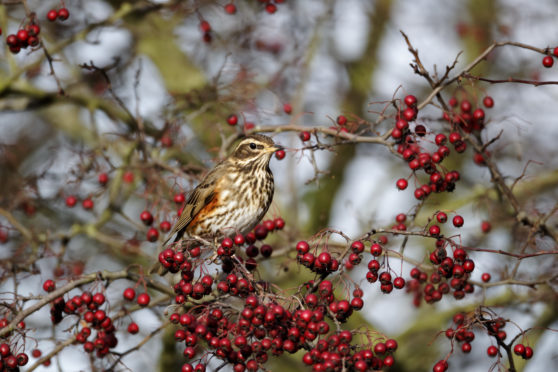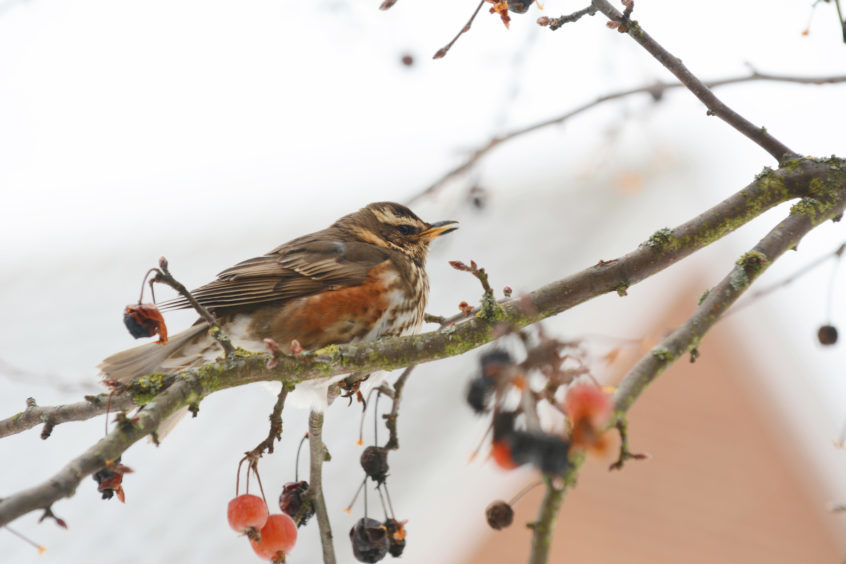It is the lightest of sounds, and even in the stillness of the night air, so delicate I’m not even sure it is there. But I concentrate the mind once more, and yes, I can definitely hear it; a thin wispy ‘seep, seep’ coming from the darkness of the heavens.
These gentle calls are being made by migrating redwings, and a steady stream of them too, as they make their way inland following a long crossing of the North Sea. These delightful little thrushes spend the summer in Scandinavia and Russia where they breed in birch forests. But coldness is now descending upon these northern lands, and the redwings must take flight and head towards our relatively mild shores to seek respite from the approaching harshness of winter.
I stand in the garden for a while longer, listening to their night-sky murmurs and imagine what it must be like to be up there in the starry void. It is a clear night and these redwings will have an all-encompassing view of the glowing lights of Kinross-shire, Fife and beyond. But they will need to land soon – and that will be difficult in the dark.
The following morning, and with light just breaking, I ascend a little hill on the margins of the Ochils, the autumnal aroma of damp grass whirling across my senses. Soon, I hear redwings again, but a different call this time, a shorter, muffled ‘kuk, kuk’ emanating from a stand of spruces.
Then one, two and finally three birds fly out from the trees and swoop down a nearby sheep pasture towards some berry-laden hawthorns. I’m momentarily distracted by the screech of an over-flying jay, but I peer once more down upon the hawthorns and catch the redwings devouring their glistening haws with enthusiasm.
For the next few weeks they’ll need to make the most of this berry bounty, because once it dwindles, food will be much harder to find, especially when frosts harden the ground.
On my way back, a glimmer of yellowy-orange shines out from a rotting tree root. I hunker down onto my knees to discover several tiny prongs of stagshorn fungus clinging upon the root’s surface. Stagshorn is such an appropriate name, as they do indeed resemble miniscule deer antlers, and this, combined with their vivid lemon colour, makes it such an unusual fungus.
Another jay, or perhaps it is the same one, screeches in the distance, and as I haul myself back to my feet, the coppery elongated leaves of a nearby sweet chestnut tree shine out at me; a wonderfully warm but crisp colour and the very essence of autumn itself.
Autumn and spring – my two favourite seasons – and I can never decide which I prefer. But autumn just about shaded it on this gold-tinged morning, with the cutting invigoration of the air filling my lungs like a heady elixir; a day where nature sang wherever you looked.
- Info: Look out too for fieldfares at this time of year; another winter thrush. They are larger than redwings, with slate grey head and rump, and a yellowish speckled breast.











